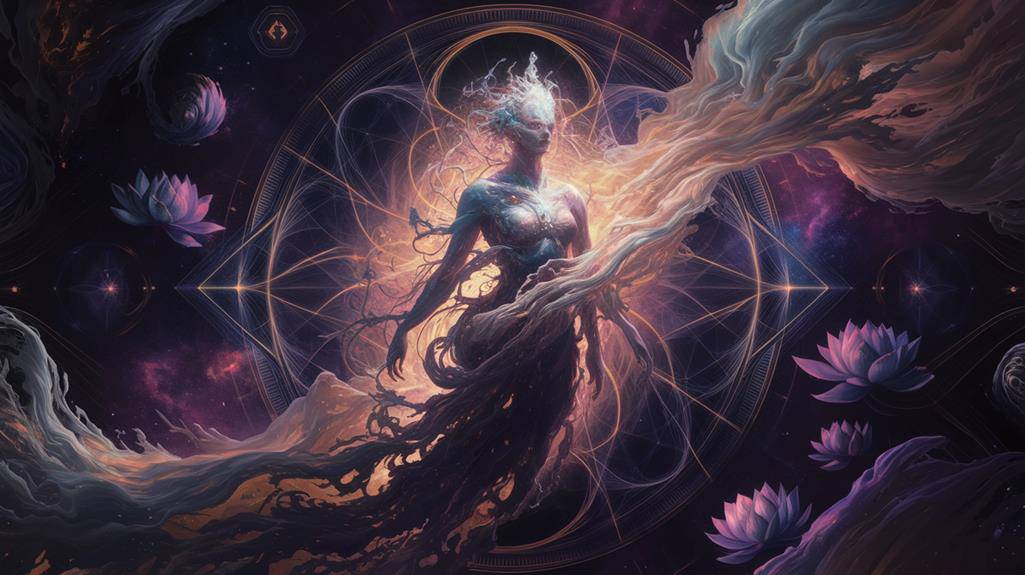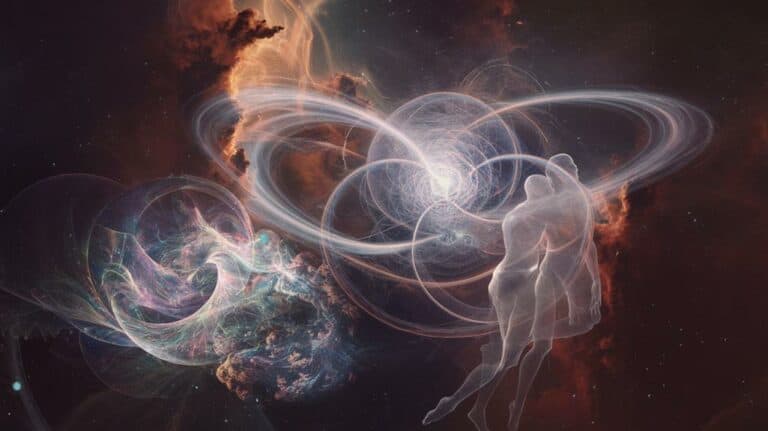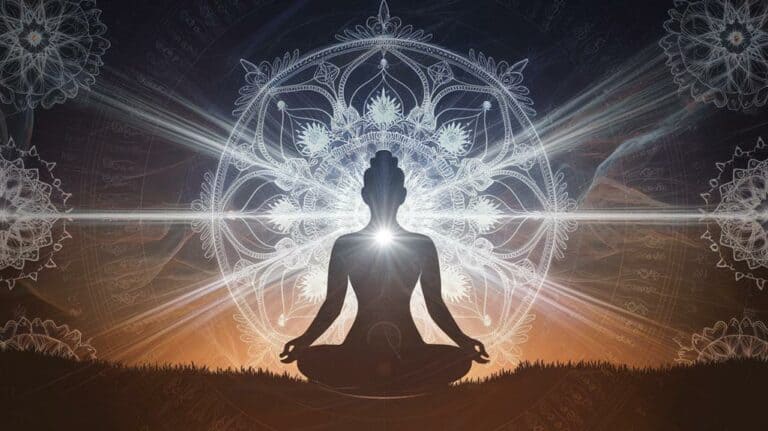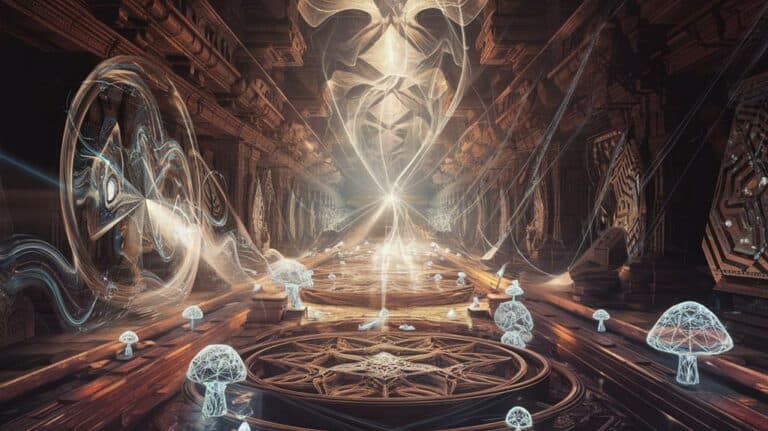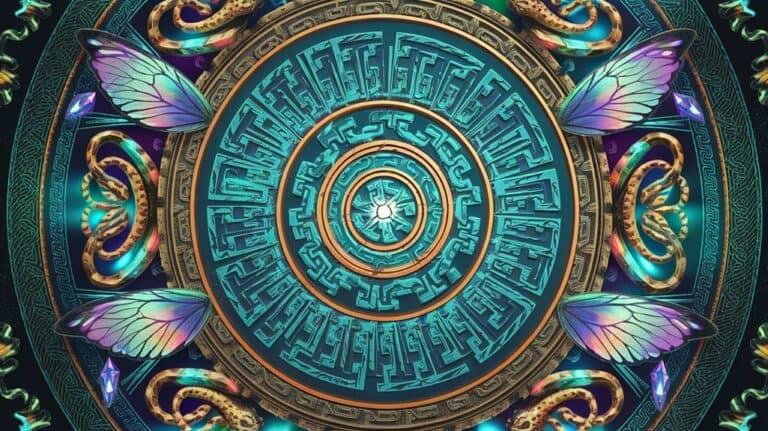The Roadmap to Spiritual Emergencies: Embracing the Transformative Journey
You’ve probably heard stories about people who’ve experienced profound spiritual awakenings that turned their world upside down. These intense episodes, known as spiritual emergencies, aren’t just challenging moments of confusion—they’re potential doorways to remarkable personal transformation. While you might dismiss such experiences as mere psychological breakdowns, there’s a growing body of evidence suggesting they’re distinctive states that bridge the mystical and psychological domains. Understanding the difference between a spiritual emergency and mental illness has become vital for mental health professionals, as the way these experiences are handled can determine whether they become crises or catalysts for growth.
Defining Spiritual Emergency

A spiritual emergency represents a profound psychological crisis that occurs when mystical or transcendent experiences overwhelm an individual’s coping mechanisms.
You’ll find yourself thrust into an intense period of transformation where your ordinary reality dissolves, and you’re confronted with extraordinary perceptions that challenge your fundamental understanding of existence. These experiences can manifest as vivid visions, encounters with archetypal beings, or overwhelming sensations of unity with the cosmos.
During this emergency, you’re likely to experience a dismantling of your previous worldview as your consciousness expands beyond familiar boundaries.
It’s vital to understand that while these episodes share similarities with psychotic breaks, they’re distinct in their potential for positive transformation and healing.
You might find yourself maneuvering between different dimensions of reality, experiencing intense energy movements through your body, or receiving what feels like divine insights.
Unlike mental illness, a spiritual emergency often carries a profound sense of meaning and purpose, even amidst the chaos.
Your challenge lies in integrating these powerful experiences while maintaining enough groundedness to function in everyday reality.
Historical Origins and Development
The concept of spiritual emergency traces its roots to ancient shamanic traditions, where intense psychological transformations were viewed as sacred initiatory experiences.
You’ll find that throughout history, mystics, saints, and spiritual seekers have documented their encounters with extraordinary states of consciousness that modern psychiatry might label as psychotic episodes.
In the 1960s and 70s, you’d see a significant shift as transpersonal psychology emerged, spearheaded by pioneers like Stanislav Grof and Christina Grof.
They’d recognize that what you’re experiencing during spiritual crises isn’t necessarily pathological but potentially transformative.
You’re part of a lineage that stretches from ancient wisdom traditions through Carl Jung’s work on the collective unconscious to modern holistic approaches to mental health.
The field’s development has challenged you to reconsider how you view psychological distress, especially when it’s intertwined with spiritual awakening.
You’re now able to understand that what was once seen as purely symptomatic of mental illness can actually be a profound opportunity for growth and transformation, marking a revolutionary shift in how you approach consciousness and healing.
Signs and Common Manifestations
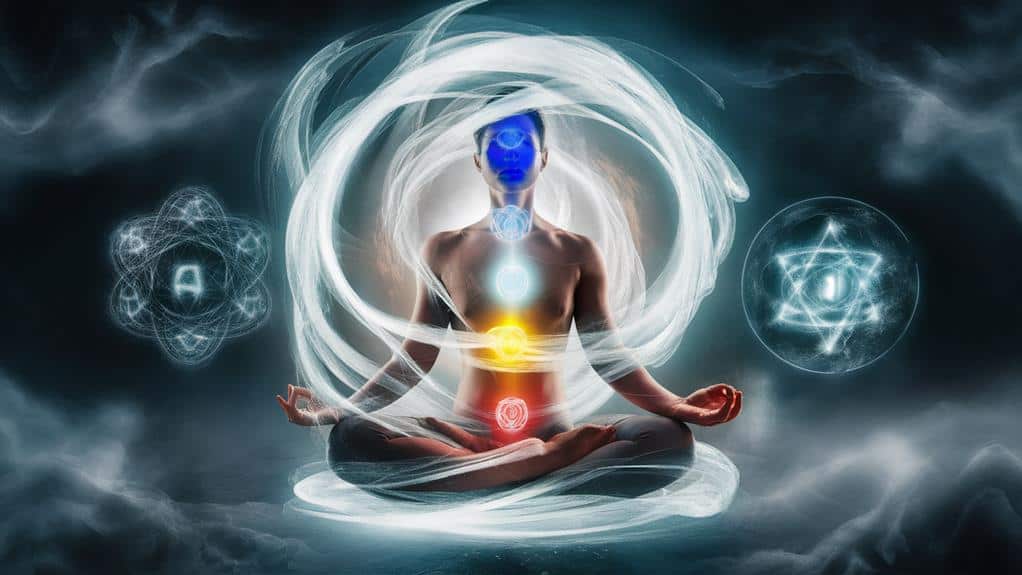
Recognizing spiritual emergency requires understanding its distinct manifestations and warning signs.
You’ll notice an intense acceleration of psychological processes, often accompanied by vivid dreams, synchronicities, and profound altered states of consciousness that can’t be explained through ordinary frameworks.
During these transformative episodes, you might experience overwhelming waves of energy coursing through your body, accompanied by spontaneous yogic movements or unusual physical sensations.
You’ll find yourself questioning reality‘s fundamental nature as the boundaries between your inner and outer worlds begin to blur.
Heightened sensitivity to others’ emotions and inexplicable psychic experiences may emerge, leaving you feeling both expanded and vulnerable.
Watch for signs like dramatic shifts in your sleep patterns, intense emotional fluctuations, and a deep urge to make sense of existential questions that suddenly feel urgent and personal.
You may encounter vivid mythological themes or archetypal symbols in your consciousness, while experiencing a simultaneous dissolution of your familiar sense of self.
These experiences often coincide with a pressing need to integrate spiritual insights with everyday reality, marking the critical junction where spiritual emergence can become emergency.
Cultural Perspectives on Mystical Crisis
Cultural interpretations of mystical crises vary dramatically across different societies, shaping how these intense spiritual experiences are understood and managed.
You’ll find that while Western cultures often pathologize these experiences, treating them as mental health disorders requiring medical intervention, indigenous traditions frequently recognize them as sacred initiations or transformative rites of passage.
In your journey toward understanding these perspectives, you’ll discover how Eastern philosophies view mystical crises as natural awakening processes, where your consciousness expands beyond ordinary reality.
Traditional shamanic cultures might interpret your experience as a calling to heal others, while Buddhist traditions could see it as an opportunity for profound spiritual development.
You’re entering an area where what’s considered “crisis” in one culture might be celebrated as enlightenment in another.
When you’re maneuvering through these cultural frameworks, you’ll notice how they influence treatment approaches.
While you might encounter psychiatric medications in Western settings, traditional societies could offer ceremonial support, community rituals, or guidance from spiritual elders.
This diversity of perspectives reminds you that your mystical crisis isn’t just a personal journey – it’s deeply embedded in cultural contexts that shape its meaning and resolution.
Differentiating Emergency From Psychosis

Building on these cultural frameworks, healthcare providers and spiritual counselors face a complex challenge in distinguishing between spiritual emergencies and clinical psychosis.
You’ll notice that while both conditions may share surface similarities – altered states of consciousness, vivid visions, or intense emotional experiences – their underlying nature and appropriate treatment paths diverge considerably.
In spiritual emergencies, you’re likely to maintain a fundamental connection to reality while experiencing profound shifts in consciousness.
You’ll often find yourself able to recognize the transformative nature of your experience, even as you struggle to integrate it. Unlike psychosis, where you might lose touch with consensual reality, in spiritual emergency you’ll typically preserve some capacity for self-reflection and rational discourse about your experience.
You’ll discover that the key differentiating factors include your ability to maintain relationships, your openness to guidance, and the presence of meaningful spiritual or transpersonal content in your experience.
When you’re undergoing a spiritual emergency, you’re more likely to seek understanding rather than reject help, and you’ll often sense an underlying purpose to your crisis, even if it feels overwhelming.
Support Systems and Treatment Approaches
Effective support for spiritual emergencies calls upon a diverse network of resources, from traditional mental health services to spiritual mentors and holistic healers.
You’ll find that integrating multiple approaches creates a thorough safety net that honors both your psychological well-being and spiritual journey. Working with therapists who understand transpersonal psychology can help you navigate the intense emotions and profound shifts in consciousness you’re experiencing.
You’ll benefit from establishing connections with others who’ve undergone similar transformative experiences, whether through support groups or spiritual communities that recognize the validity of your journey.
It’s crucial to work with practitioners who won’t pathologize your experience but can help you distinguish between genuine spiritual emergence and potential mental health concerns requiring immediate attention.
Consider incorporating body-centered practices like yoga or meditation, which can ground you during overwhelming moments and help integrate your insights.
Integration and Personal Transformation

After establishing a strong support network, the real work of personal transformation begins.
You’ll find yourself maneuvering through layers of profound insight and understanding as you integrate your mystical experiences into your everyday reality. Through this process, you’re called to examine your fundamental beliefs, values, and the very essence of who you’ve understood yourself to be.
During integration, you’ll discover that your mystical experiences aren’t meant to remain separate from your daily life – they’re catalysts for deep, lasting change.
You’re learning to bridge two worlds: the transcendent sphere you’ve glimpsed and the practical reality you inhabit. This integration process transforms your relationships, career choices, and life purpose, as you’re called to embody the wisdom you’ve gained through your spiritual emergency.
You’ll notice that you’re developing new ways of being: perhaps you’re more compassionate, more aware of life’s interconnectedness, or more attuned to subtle energies.
These changes aren’t merely superficial adjustments – they’re profound shifts in your consciousness that ripple outward, affecting every aspect of your existence and contributing to your evolution as a spiritual being.
Modern Research and Clinical Evidence
Recent scientific research explores the neurological and psychological aspects of spiritual emergencies, backing up what mystics and spiritual practitioners have known for millennia.
You’ll find compelling evidence in brain imaging studies that show distinct neural patterns during transcendent experiences, particularly in regions associated with self-awareness and emotional processing.
Clinical studies at major research institutions have documented hundreds of cases where individuals navigate through spiritual emergencies, revealing common patterns you might recognize in your own journey.
You’ll discover that modern psychiatry‘s growing acceptance of spiritual emergence as a valid psychological process has led to specialized treatment protocols that honor both the medical and transpersonal dimensions of these experiences.
Research conducted at universities worldwide has demonstrated that when you’re properly supported through a spiritual emergency, you’re more likely to experience positive outcomes, including enhanced psychological well-being and deeper life purpose.
The data suggests you’re not alone in these experiences – studies indicate that up to 64% of people report at least one significant mystical experience in their lifetime, though the intensity and duration vary considerably.
These findings validate the universal nature of spiritual emergencies while highlighting their potential for profound transformation.



